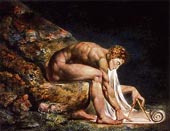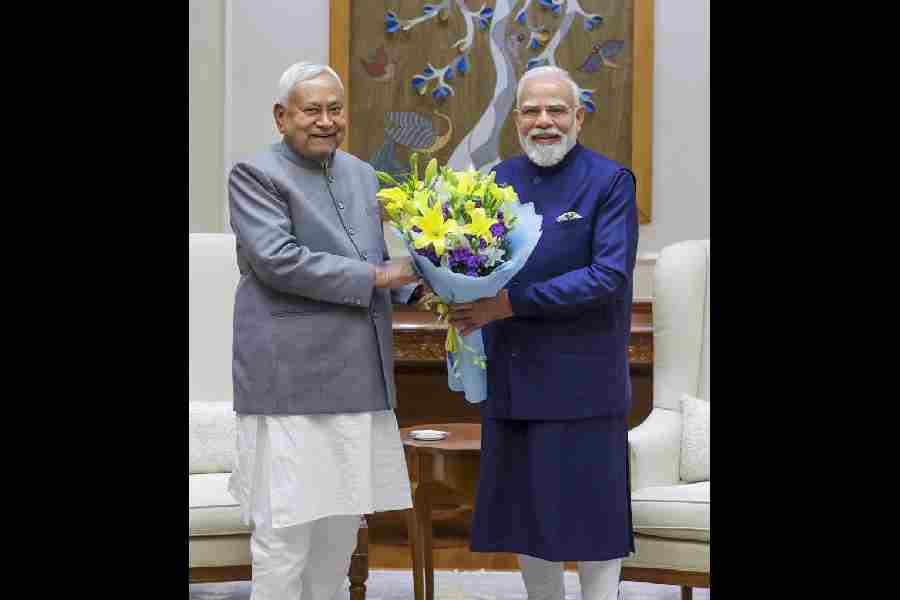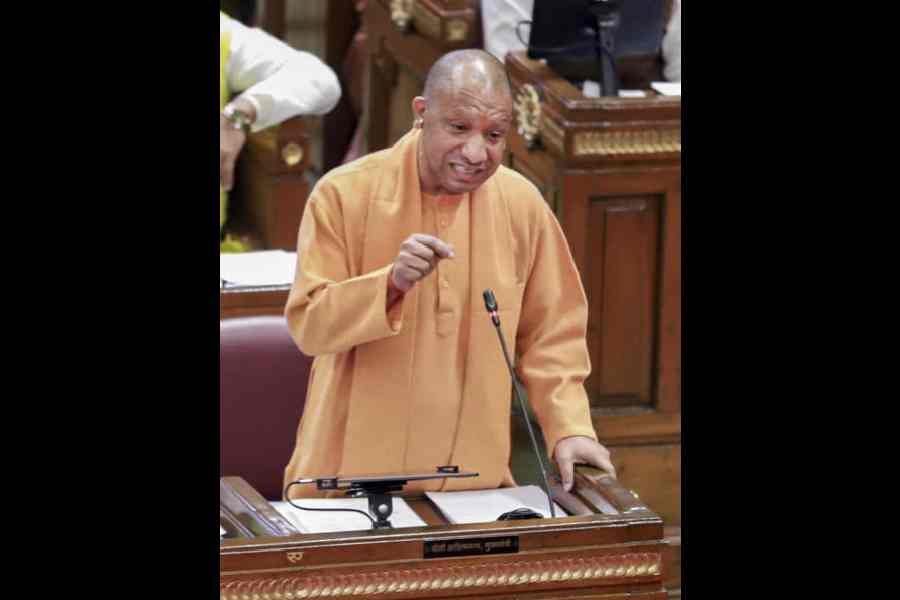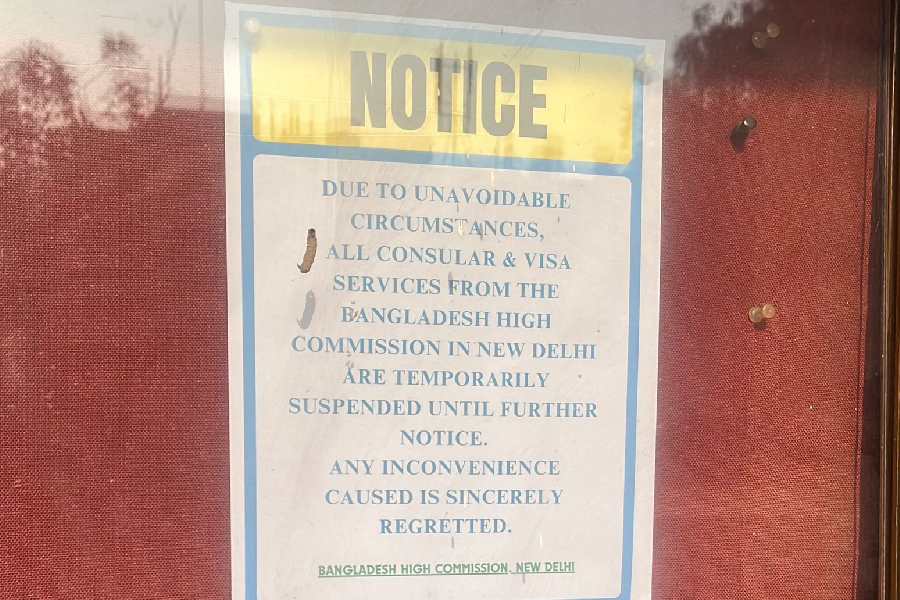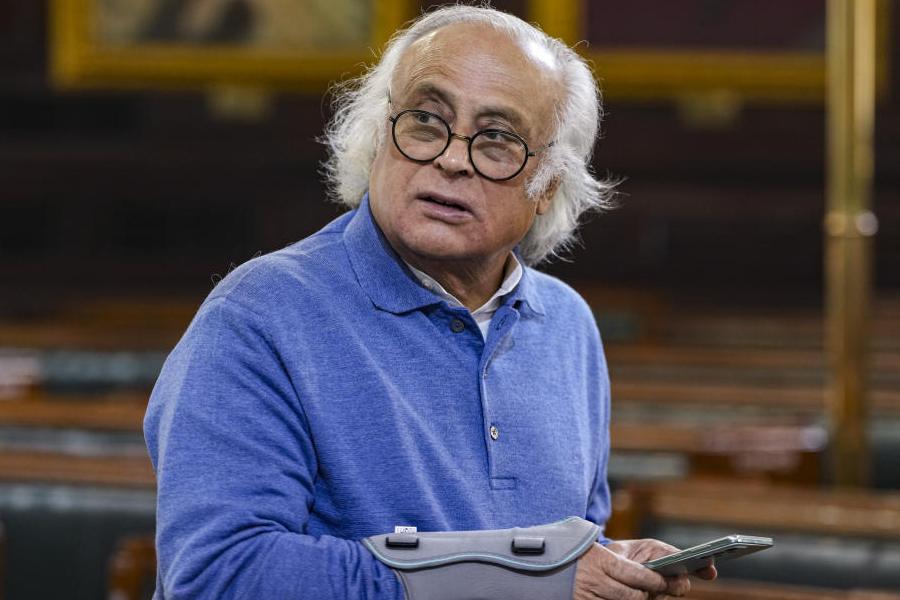 |
| One of the questions at the visual round of the JU quiz: This is a watercolour by William Blake dated 1795.Whose portrait is it ? Answer: Isaac Newton |
The 16th annual seminar of the Centre for Studies in Romantic Literature on February 5 started on an amusing note.
At the end of the inaugural lecture by Professor Richard Cronin of the University of Glasgow, chairperson Bharati Roy, former pro-vice chancellor of Calcutta University, looked perplexed. “Where is the masculinity in the paper?” she asked, glancing pointedly at the printed programme which announced “Literature and Masculinity after Waterloo” as the subject.
But Professor Cronin had decided to reverse the order of the two papers he was to deliver. What he had just delivered was a paper on “Cruel Mockeries: Romanticism and the Cult of Unfeeling”.
When that was made known, the cringed brows relaxed. “Then it’s a brilliant paper,” Roy announced.
If the auditorium at Jadavpur University was already crowded, the numbers overflowed when Nicholas Roe, of the University of St Andrews, rose to speak on Keats and the Elgin Marbles.
Elgin Marbles are a collection of classical Greek sculptures from Parthenon brought to England between 1803 and 1812 by the Earl of Elgin.
Roe’s paper discussed with visual aid the impact of these sculptures as well as Keats’s reaction in two of his sonnets. A lively debate ensued afterwards about which country should claim Elgin Marbles now, England or Greece.
Cronin’s paper on masculinity was delivered on the second day of the seminar.
The sharp analysis focused on the re-masculinisation of the British literary public sphere after Waterloo. (Napoleon emasculated the British?) Post-1770, women writers had been the dominant players, and in many cases best-selling ones, in Britain.
Post-Waverley, Scott’s version of the historical novel sought to represent itself as more robust than the earlier “sentimental” novel. And yet Scott’s heroes, argued Cronin, are portrayed as both masculine and feminine —they are, for example, given to blushing.
Cronin also brought out the fascinating way in which boxing was discussed, both as a pursuit and as a metaphor for literature, by reviews such as New Monthly Review. This
journal, unlike Blackwood’s, welcomed female readers instead of insulting them — then tried to make them boxing aficionados.
The concluding event was a quiz on Romantic literature. Conducted by Sudeshna Banerjee and Debojoy Chanda, the quiz saw a keen contest between the two teams from JU — Words Unworthy, comprising Lav Kanoi and Arindam Datta, and Little girls Lost Rukmini Banerjee and Reeti Roy, with the former surging ahead in the music round.
Some of the questions called for wild guesswork. To the question “How Shelley escaped punishment despite describing the reigning monarch George III as ‘An old, mad, blind, despised and dying king’ in his sonnet ‘England in 1819’, someone suggested that the poet hid himself somewhere.
When all the teams failed, Prof Roe picked up an audience prize by saying that Shelley did not publish the poem in his lifetime. A dumb charade round at the end provided much mirth.
Sachcha report
More than two years after the Sachar committee report was presented, not much has changed in the Muslim community.
In West Bengal, the government hardly seems to have noticed the report, felt participants at the National Conference of Muslim Women’s Rights Network held recently in the city.
Some of the most glaring cases of Muslim deprivation can be found in West Bengal, where in common perception, secularism and egalitarianism have been promoted in all walks of life.
In Bengal, almost 25 per cent of the population is Muslim, but their share in government jobs is a paltry 4.2 per cent. If Muslim men fare badly, the women, as always, fare worse. There are the age-old problems: talaq, rigidity of the maulavis, early marriage. But what is the biggest difficulty faced by Muslim women now?
“Unemployment,” says Ayesha Khatun from Birbhum, without a moment’s hesitation. She runs an NGO there. Women’s unemployment is a serious problem in the community now. Girls —from all communities — are attending school more. But once they pass out, from Class X or Class XII, there is nowhere to go. Job opportunities are limited.
“I am an example myself.” Ayesha has tried her luck repeatedly at the WBCS examination and failed.
A vocal, vibrant woman, she insists that she was no weaker than the other candidates. Discrimination against the community in the job sector, she says, happens in invisible ways.
Meanwhile, Khatun tries to work with other women, Muslim and tribal, in Birbhum, trying to enable employment and access to resources. She, like others working for the community, is also trying to popularise the Sachar Committee report.
“Most villagers haven’t heard about it. But the name Sachar makes it easier. ‘Sachcha report?’ they ask.”
By a staff reporter

